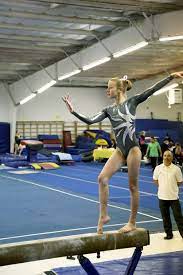There’s a moment every parent knows—when a child can’t stop flipping off the couch, cartwheeling across the lawn, or climbing door frames like a mini ninja. That’s not chaos; that might just be potential. Gymnastics for kids isn’t just about building physical skills—it’s a gateway to confidence, social development, and healthy habits that last a lifetime.
So how do you know if gymnastics is the right fit for your child? Here are five clear signs that your little one might thrive on the mat.
1. Your Child Is Always Moving—and Climbing Everything
If your child treats the living room like a jungle gym, chances are they’re hungry for movement. Gymnastics gives active kids a structured way to channel their energy, while learning control and discipline.
Whether it’s balancing on a beam, swinging on bars, or perfecting handstands, gymnastics is a safe environment for kids to build strength and flexibility. And let’s be honest—it’s way better than scaling your kitchen counters.
And the best part? Physical literacy learned through gymnastics translates seamlessly to other sports, including indoor cricket. Many coaches find that children with a gymnastics foundation transition faster into sports that demand coordination, agility, and quick thinking—like gymnastics for kids programs offered alongside community cricket leagues.
2. They Love a Challenge and Aren’t Afraid to Try Again
Some kids back down at the first fall. Others pop up, brush it off, and try again—with even more determination.
If your child leans into challenges, gymnastics can be an incredibly fulfilling outlet. It rewards patience, repetition, and resilience. Every cartwheel starts crooked. Every bridge starts shaky. But with practice, the wins feel enormous—and personal.
This sense of achievement can help build mental stamina, which is useful beyond the gym. From group sports to creative classes, kids who persist through difficulty are more likely to succeed long-term.
In fact, that’s the same kind of persistence that shows up in other team sports. Programs like gymnastics for kids often run in facilities that also host indoor cricket matches, giving families an easy path to explore different sport types as their child grows.
3. They Imitate Dances, Tricks, or YouTube Athletes
Does your child watch gymnastics routines on repeat? Do they try to copy trampoline flips or TikTok balance tricks?
If so, it’s more than a phase. Mimicking movement is an early form of body awareness and motor planning. Gymnastics for kids develops this further, offering safe ways to try these moves while learning proper form from qualified coaches.
Learning in a group also adds positive peer pressure. Kids see others mastering skills and get excited to push themselves—especially in classes that encourage fun and teamwork, not just competition.
Better still, movement-based activities are known to improve attention spans and focus. According to Raising Children Network, regular physical activity is linked to better school outcomes and emotional wellbeing in school-aged children.
4. They Prefer Hands-On Learning to Sitting Still
Let’s face it—not every kid loves sitting still with worksheets. And that’s completely normal.
Many children learn best by doing. Gymnastics for kids taps into that tactile learning style, helping young brains connect with their bodies through movement-based problem solving. From figuring out how to swing across monkey bars to memorising tumbling sequences, classes engage both physical and mental muscle.
These kids often thrive in environments where they can experiment, adjust, and physically experience a lesson. That’s why many parents combine gymnastics with sports like gymnastics for kids and junior cricket—each teaches a different kind of movement logic.
5. They Enjoy Being Around Other Kids (Even If They’re Shy at First)
Gymnastics is social by design. Kids might train individually, but they learn alongside peers. Over time, shy children often open up as they cheer each other on and celebrate milestones together—whether it’s a first forward roll or sticking a landing.
This team-like environment is especially great for kids who aren’t quite ready for high-contact sports. It offers the community of a sport without the pressure of direct competition.
Later, that confidence makes it easier for them to try other group activities—whether it’s school drama, music groups, or local indoor sports.
Final Thoughts: Is Gymnastics the Right Move?
You don’t need to wait for Olympic ambitions. If your child lights up when they move, learns best by doing, or thrives on a challenge, gymnastics for kids could be the right next step.
It’s not about creating athletes—it’s about helping young people build healthy habits, make friendships, and discover what their bodies can do.
Whether they stick with gymnastics or branch out to other sports like tape ball or junior cricket, the benefits stick around for life.
And honestly, you might just find yourself cheering louder than anyone when they finally land that perfect cartwheel.

